NCAR's High Altitude Observatory (HAO) will be installing a new white light coronagraph at the Mauna Loa Solar Observatory (MLSO) in Hawaii in August of this year (2013). A coronagraph is an instrument designed to mimic a total solar eclipse, which occurs when the moon completely occults the solar disk. The new coronagraph, known as K-cor, was designed by HAO engineers and scientists, along with two engineering consultants. K-cor will replace the 1-D scanning coronameter at Mauna Loa known as the Mk4. K-cor will provide a factor of ten improvement in speed and signal-to-noise as well as significant advancements in calibration accuracy and reliability.
It is specially designed to acquire images of the lowest region of the very faint, hot solar atmosphere known as the corona. With a field-of-view of 1.05 to 3.0 solar radii, and a time cadence of 15 seconds, the K-cor will provide unprecedented white light imaging for studying the birth and evolution of coronal mass ejections (CMEs). CMEs are dramatic eruptions in the solar atmosphere that hurl millions of tons of magnetized plasma into the solar wind that can create severe space weather at Earth and throughout the heliosphere. High time cadence images of the low corona provide crucial observations for understanding the formation of CMEs and CME-driven shocks in the solar wind.

A sequence of coronal images from Mk4 showing a CME erupting through the corona in May 2001.
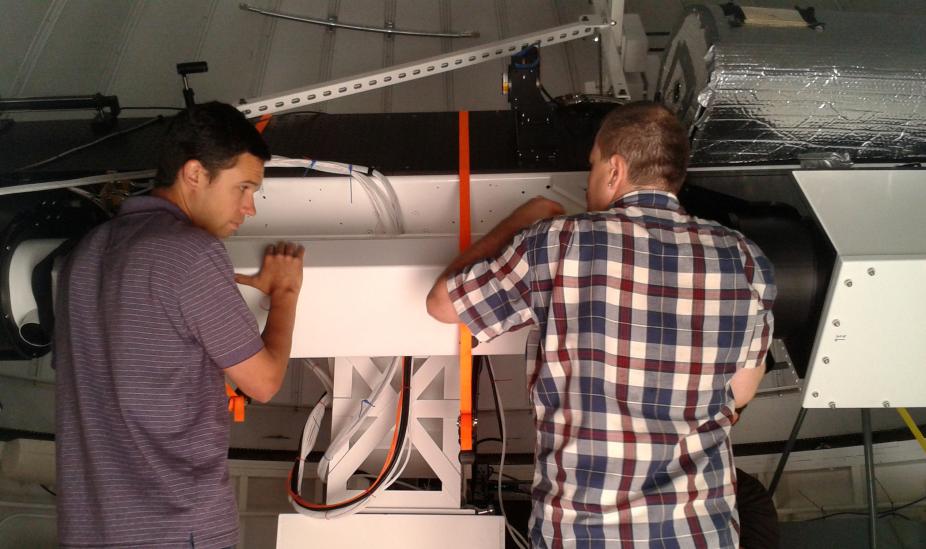
Electrical engineer, Brandon Larson, and Technician Rob Graves install the K-cor center section onto the solar spar at the NCAR Mesa Lab in Boulder.
K-cor has been successfully deployed to the HAO solar spar in Boulder, Colorado. The deployment required careful alignment of the optical systems beginning with the installation of the primary objective lens near the front of the telescope. The objective lens is bombarded by light from the solar surface, which is a million times brighter than the faint corona. The lens must be nearly free of scratches, striations and any blemishes that will cause light to scatter and overwhelm the faint signal coming from the corona.
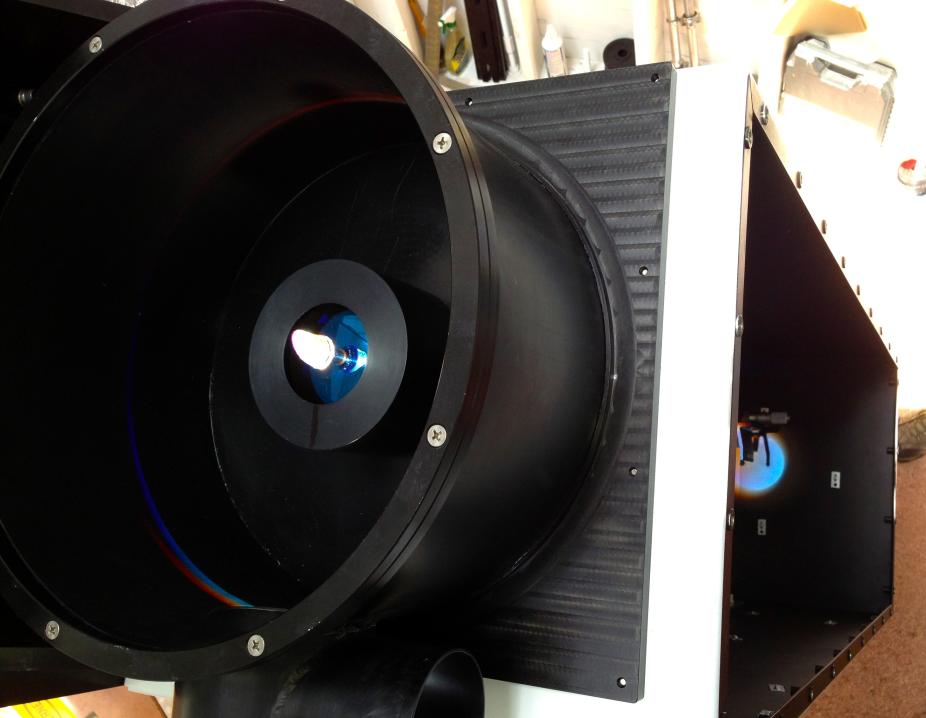
K-cor occulter
The back end of the K-cor instrument contains the occulter, filters, polarization modulator, lenses and cameras. The system is carefully designed to filter out all unwanted light and capture the all-important polarized light scattered by the electrons in the Sun’s corona. If the corona were not polarized it would not be possible with current technologies to observe it in white light from the ground except during a total solar eclipse. The white object at center left in the image is the K-cor occulter, illuminated by, and blocking, the bright light from the solar surface.
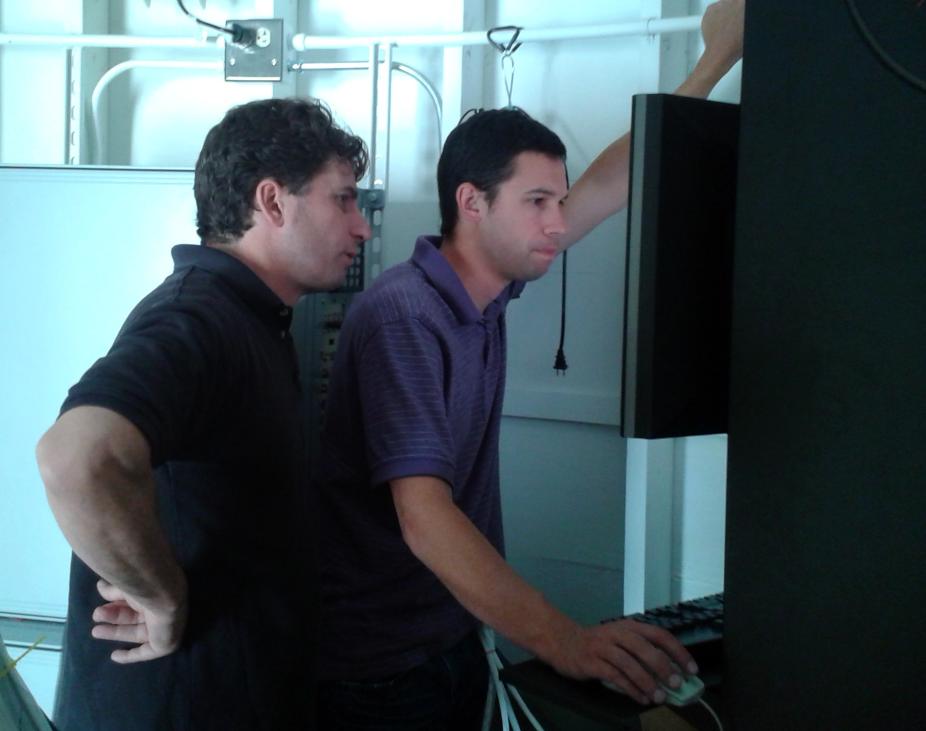
K-cor system testing at the Mesa spar by project manager Scott Sewell and electrical engineer Brandon Larson.
K-cor is undergoing spar testing before it is fully deployed to the Mauna Loa spar in August. The pristine skies at MLSO provide the ideal sky conditions needed to observe the faint corona. HAO engineers and scientists will work with the Mauna Loa observers (Allen Stueben, Ben Berkey, Greg Rose and Lisa Waters) to complete the installation at MLSO by September.
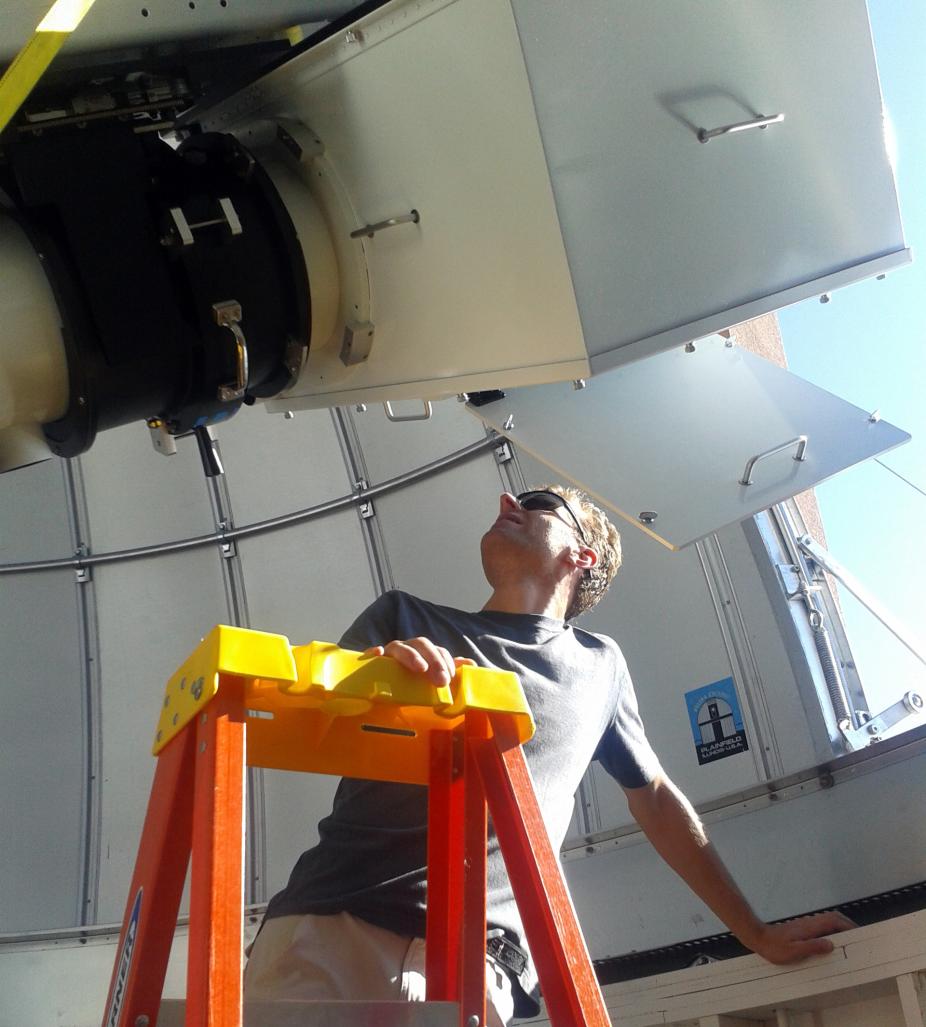
K-cor instrument scientist Alfred de Wijn inspects the calibration optics at the Mesa spar in Boulder.
Following installation at the Mauna Loa spar, K-cor will begin routine observations of the corona. Final checks on data calibration by HAO scientists, led by Alfred deWijn (pictured at left,) will be completed and cross-checked to space-based coronagraph observations to ensure the community receives highest quality dataset. All K-cor observations will be provided via the Mauna Loa website.
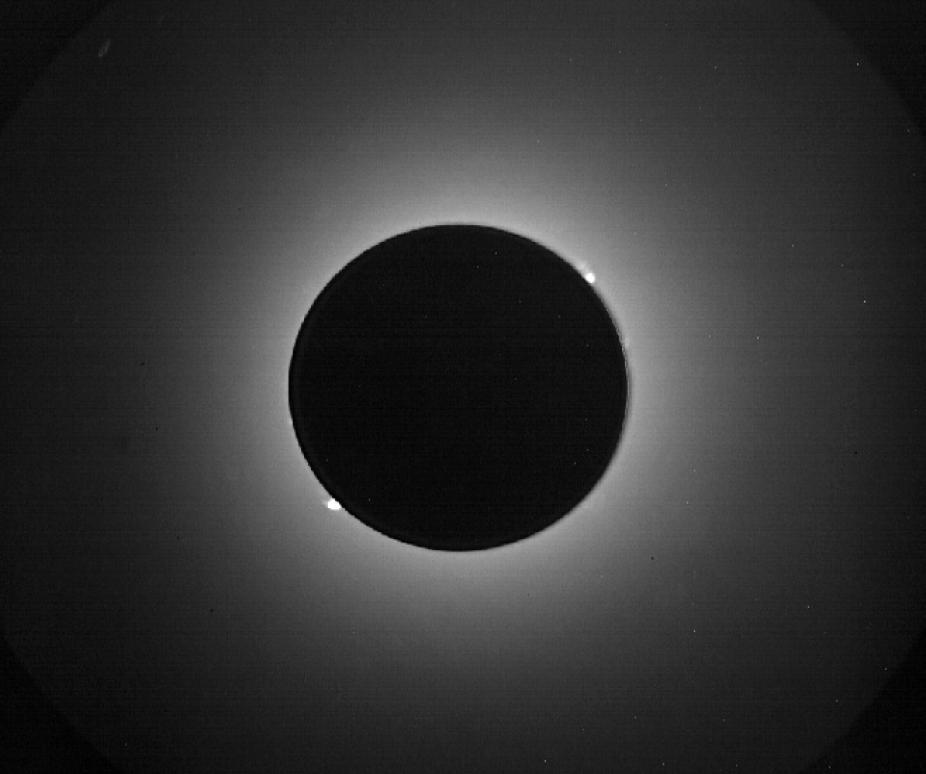
K-Cor H-alpha image
An image of the solar corona taken with the K-cor in a neutral emission line of hydrogen known as H-alpha. The dark circle is the projection of the occulter obscuring the solar disk. The two bright features are dense, cool objects known as prominences which may play a key role in the dynamical processes that result in CME formation.